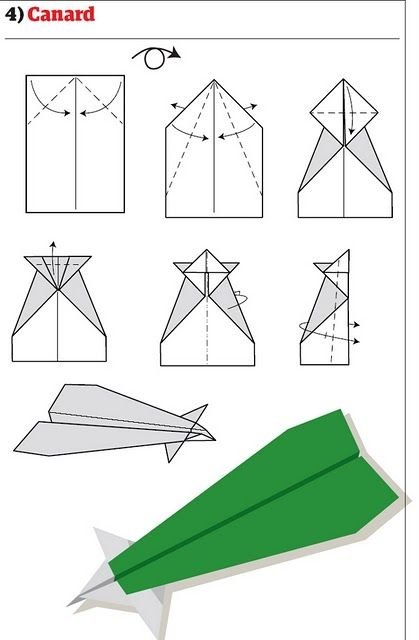|
|
Paper Aeroplane Toy Build Guide
|
Origami Flying Wings
The former Guinness world record holder Tim Richardson disagrees with the decision to put a 'tail' on the paper plane. His explanation of paper plane aerodynamics on his website mentions that the tail is not needed. He uses the real-life B-2 Spirit flying wing bomber as an example, stating that the weights along the wing should be put forward in order to stabilize the plane. (Note: paper planes do not need a tail primarily because they typically have a large, thin fuselage, which acts to prevent yaw, and wings along the entire length, which prevents pitch.)
Independently, Edmond Hui invented a Stealth Bomber-like paper plane called the Paperang in 1977, based on hang glider aerodynamics. Uniquely, it has properly controlled airfoil sections, high aspect ratio wings, and a construction method designed to allow the builder to vary every aspect of its shape. It was the subject of a book, "Amazing Paper Airplanes" in 1987, and a number of newspaper articles in 1992. It is ineligible for most paper plane competitions due to the use of a staple, but it has extremely high gliding performance exceeding glide ratios of 12 to 1 with good stability.
In 1975, origami artist Michael LaFosse designed a pure origami (one sheet; no cutting, glue or staples...) flying wing, which he named the "Art Deco Wing".
|
|









